High speed and wide bandwidth demands drive data centers to consolidate into more complex systems. The speed of data center now is increasing to 40G and eventually to 100G. How to achieve 40G connectivity? In fact, we need some new optical technologies and cabling infrastructure. In this post, I will introduce some commonly used qsfp and qsfp cable for 40G connectivity.
40G QSFP Modules
As we know, fiber optic transceiver is an electronic device that receives an electrical signal, converts it into a light signal, and launches the signal into a fiber. It also receives the light signal, from another transceiver, and converts it into an electrical signal. It is the key component in fiber optic transmission. The basic interface of 40G pluggable optical modules are 40GBASE-LR4 and 40GBASE-SR4 in QSFP+ form factor.
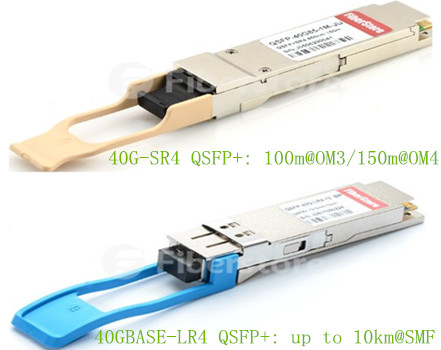
1. 40GBASE-SR4 QSFP+
40GBASE-SR4 transceivers are used in data centers to interconnect two Ethernet switches with 8 fiber parallel multimode fiber OM3/OM4 cables. It can support the transmission distance up to 100 m with OM3 fiber and 150 m with OM4 fiber. The optical interface of 40GBASE-SR4 is MPO/MTP. This module can be used for native 40G optical links or in a 4x10G mode with parallel to duplex fiber breakout cables for connectivity to four 10GBASE-SR interfaces.
2. 40GBASE-LR4 QSFP+
40GBASE-LR4 QSFP+ transceiver support with a link length up to 10 kilometers over 1310 nm single-mode fiber with duplex LC connectors. The 40 Gigabit Ethernet signal is carried over four wavelengths. Multiplexing and demultiplexing of the four wavelengths are managed within the device. It is most commonly deployed between data-center or IXP sites with single-mode fiber.
QSFP+ Cables
QSFP+ cable is designed to meet emerging data center and high performance computing application needs for a short distance and high density cabling interconnect system capable of delivering an aggregate data bandwidth of 40Gb/s. QSFP+ cables are suitable for very short distances and offer a highly cost-effective way to establish a 40G link between two switches within racks and across adjacent racks. These high speed cables provide a highly cost-effective way to upgrade from 10G to 40G or 40G to 40G interconnect connection.
1. Passive and Active Direct Attach Copper Cables
The 40g passive or active direct attach copper cables (DAC) are designed with twinax copper cable and terminated with QSFP+ connectors. The main difference between passive DAC and active DAC is that the passive one is without the active component. Therefore, active QSFP+ DAC can achieve a longer transmission distances than passive QSFP+ cable.
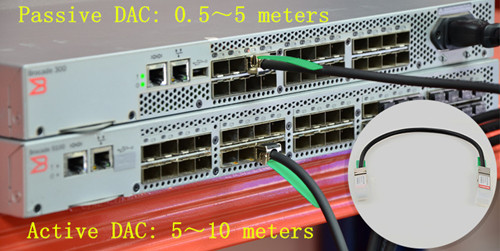
2. Active Optical Cable (AOC cable) Assemblies
Active optical cable, namely AOC brings a more flexible cabling than direct attach copper cables with the advantages of lighter weigth, longer transmission distance and higher performance for anti-EMI. Now, 40G AOC cable are popular with users.
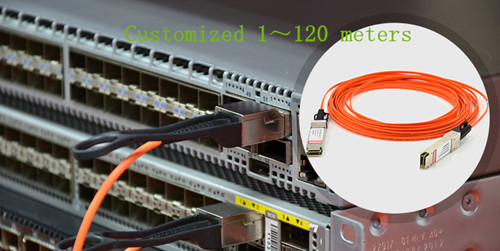
MPO/MTP Cable Series
Since 40GBASE-SR4 and 40GBASE-CSR4 both use MPO/MTP connector. Therefore, in addition to fiber optic transceivers and direct attach cables, MTP cabling series usually needed to achieve 40G connectivity. This series include MTP trunk cables, MTP-LC harness/breakout cables, LC or MTP patch cables, MTP-LC cassette modules, MTP adapter panels and MTP rack mount holders.
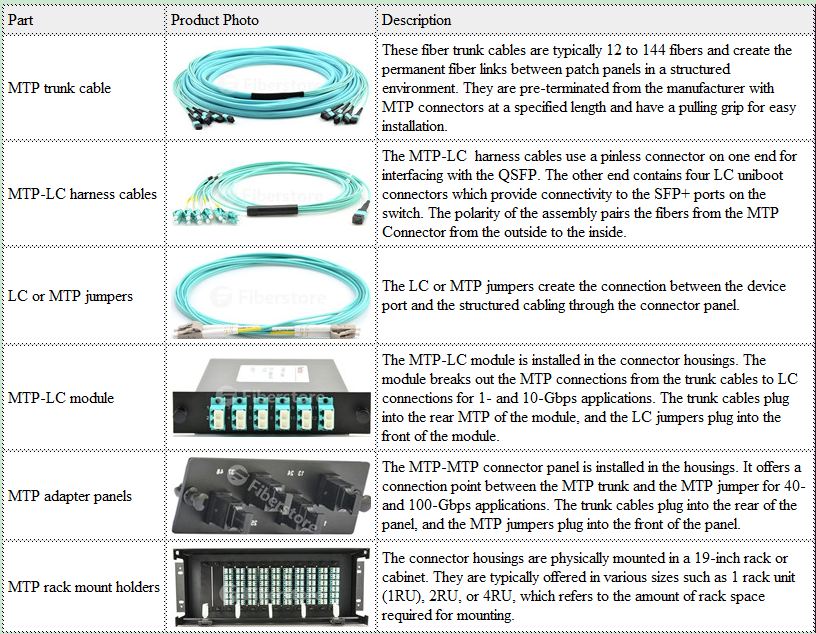
Fiberstore offers a comprehensive solution for 40G network connectivity. What’s more, products such as 40GBASE-LR4 and 40GBASE-SR4 modules are in stock and can shipped in 12hrs. For more information, please visit www.fs.com.
Related article: Do You Know about Active Optical Cable (AOC Cable)

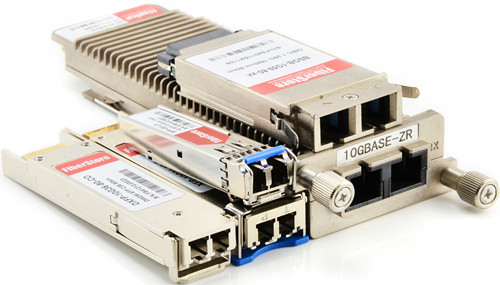
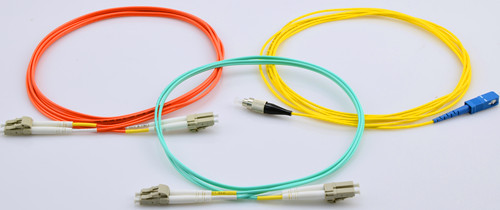
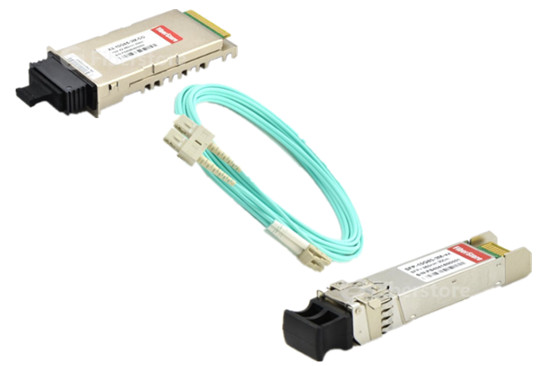
 The 40GBASE-LR4 CWDM QSFP+ transceiver, such as
The 40GBASE-LR4 CWDM QSFP+ transceiver, such as 
 Unlike CWDM QSFP+ transceiver which uses a LC connector, PSM QSFP+ is a parallel single-mode optical transceiver with an MTP/MPO fiber ribbon connector. It also offers 4 independent transmit and receive channels, each capable of 10G operation for an aggregate data rate of 40G on 10km of single-mode fiber. Proper alignment is ensured by the guide pins inside the receptacle. The cable usually cannot be twisted for proper channel to channel alignment. In terms of a PSM QSFP+, the transmitter module accepts electrical input signals compatible with common mode logic (CML) levels. All input data signals are differential and internally terminated. The receiver module converts parallel optical input signals via a photo detector array into parallel electrical output signals. The receiver module outputs electrical signals are also voltage compatible with CML levels. All data signals are differential and support a data rates up to 10.3G per channel.
Unlike CWDM QSFP+ transceiver which uses a LC connector, PSM QSFP+ is a parallel single-mode optical transceiver with an MTP/MPO fiber ribbon connector. It also offers 4 independent transmit and receive channels, each capable of 10G operation for an aggregate data rate of 40G on 10km of single-mode fiber. Proper alignment is ensured by the guide pins inside the receptacle. The cable usually cannot be twisted for proper channel to channel alignment. In terms of a PSM QSFP+, the transmitter module accepts electrical input signals compatible with common mode logic (CML) levels. All input data signals are differential and internally terminated. The receiver module converts parallel optical input signals via a photo detector array into parallel electrical output signals. The receiver module outputs electrical signals are also voltage compatible with CML levels. All data signals are differential and support a data rates up to 10.3G per channel.
 When optical transceivers was first deployed, verifying the performance of it was straightforward. The entire network was installed and owned by a single company, and if the system worked, extensive testing of the subcomponents was unnecessary. Today, however, most optical networks use components that may come from a variety of suppliers. Therefore, to test the compatibility and interoperability of each fiber optic transceiver becomes particularly important. How to test a fiber optic transceiver? This article may give you the answer.
When optical transceivers was first deployed, verifying the performance of it was straightforward. The entire network was installed and owned by a single company, and if the system worked, extensive testing of the subcomponents was unnecessary. Today, however, most optical networks use components that may come from a variety of suppliers. Therefore, to test the compatibility and interoperability of each fiber optic transceiver becomes particularly important. How to test a fiber optic transceiver? This article may give you the answer.
 1. The input signal used to test the transmitter must be good enough. Measurements of jitter and an eye mask test must be performed to confirm the quality using electrical measurements. An eye mask test is the common method to view the transmitter waveform and provides a wealth of information about overall transmitter performance.
1. The input signal used to test the transmitter must be good enough. Measurements of jitter and an eye mask test must be performed to confirm the quality using electrical measurements. An eye mask test is the common method to view the transmitter waveform and provides a wealth of information about overall transmitter performance. 2. The optical output of the transmitter must be tested using several optical quality metrics such as a mask test, OMA (optical modulation amplitude), and Extinction Ratio.
2. The optical output of the transmitter must be tested using several optical quality metrics such as a mask test, OMA (optical modulation amplitude), and Extinction Ratio.
